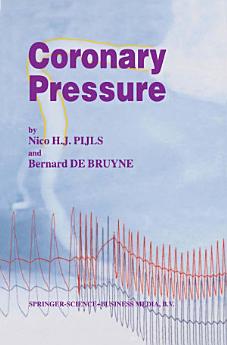Coronary Pressure
Jun 2013 · Developments in Cardiovascular Medicine Book 195 · Springer Science & Business Media
Ebook
344
Pages
reportRatings and reviews aren’t verified Learn More
About this ebook
Cardiologists must answer three important questions when evaluating and treating patients with a coronary artery stenosis. As a physiologist: "What is the effect of this stenosis on coronary blood flow and myocardial function?"; as a clinician: " Is this lesion responsible for the patient's symptoms?"; and finally as an interventionalist: "Will revascularization of this artery improve the patient?" Fundamentally, the answer to these questions can be given to a large extent by measuring coronary pressure. That is the rationale of writing this book. 1. 1 Historical overview. Andreas Gruentzig and most interventional cardiologists in the early days of PTCA, had the intuitive feeling that pressure measurements could help to establish the severity of a coronary stenosis and to monitor the progress and result of a coronary intervention. At that time, measuring coronary pressure by the balloon catheter was part of a standard procedure. A residual transstenotic gradient of less than 15 mmHg was generally considered as a good result. Later, however, it turned out that measuring these (resting) gradients with balloon catheters was inaccurate an only had a limited prognostic value. Moreover, because there was no consistent theory to correlate pressure measurements to blood flow, the interest in measuring coronary pressures faded and disappeared almost completely with the introduction of new balloon catheters not intended for pressure measurement.
Rate this ebook
Tell us what you think.
Reading information
Smartphones and tablets
Install the Google Play Books app for Android and iPad/iPhone. It syncs automatically with your account and allows you to read online or offline wherever you are.
Laptops and computers
You can listen to audiobooks purchased on Google Play using your computer's web browser.
eReaders and other devices
To read on e-ink devices like Kobo eReaders, you'll need to download a file and transfer it to your device. Follow the detailed Help Center instructions to transfer the files to supported eReaders.








